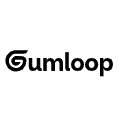Agentic AI Comparison:
Browser-Use vs Gumloop
Introduction
This report provides a detailed side-by-side comparison of Browser-Use and Gumloop—two contemporary automation agents—across the metrics of autonomy, ease of use, flexibility, cost, and popularity. The analysis is informed by product documentation, reviews, and third-party tech comparisons as of June 2025.
Overview
Browser-Use
Browser-Use is an open-source toolkit hosted on GitHub aimed at enabling programmatic browser automation. It is designed for developers who wish to automate web actions directly, offering granular control and customizability through code. While powerful and highly extensible, its user experience and ecosystem are closely tied to direct code usage and community-driven improvements.
Gumloop
Gumloop is a no-code, AI-powered automation platform targeting both technical and non-technical users. It offers a visual workflow builder for automating web scraping, data extraction, and document processing, with AI-driven nodes and native browser extension support. Founded in 2023, Gumloop emphasizes team collaboration, advanced features like conditional logic and loops, and an accessible credit-based pricing model. It has SOC 2 compliance and prioritizes privacy by not using user data to train its AI models.
Metrics Comparison
autonomy
Browser-Use: 8
Browser-Use allows for fine-grained, developer-driven browser automation due to its open nature and code-level access. Users can build highly autonomous solutions, but must script complex behaviors themselves.
Gumloop: 8
Gumloop enables high autonomy through AI-driven nodes, conditional logic, loops, and the ability to build multi-step, self-running workflows. Users can automate and schedule complex sequences visually, leveraging AI for dynamic decision making.
Both tools enable substantial autonomy—Browser-Use via raw programmatic control, and Gumloop through advanced features in a no-code environment.
ease of use
Browser-Use: 5
Browser-Use requires coding knowledge and familiarity with its API, which can be a barrier for non-developers. Its lack of a graphical interface limits approachability for new users.
Gumloop: 8
Gumloop is designed for ease with a drag-and-drop workflow builder, modular nodes, and Chrome extension for macro recording. However, its flexibility means a steeper learning curve than simple automation tools, especially for complex flows.
Gumloop offers a much lower barrier to entry for non-coders, while Browser-Use is strictly for those comfortable with programming.
flexibility
Browser-Use: 7
As an open-source toolkit, Browser-Use is highly flexible for developers, enabling custom workflows and integrations limited only by programming ability. However, it lacks built-in AI and visual composition features.
Gumloop: 9
Gumloop is one of the most flexible no-code tools available, supporting visual logic (loops, conditions), AI models (GPT-4, Claude, Gemini), data extraction, and custom Python/JavaScript nodes. It’s designed to surpass typical no-code tools' constraints.
Browser-Use excels in flexibility for programmers, but Gumloop delivers greater out-of-the-box flexibility for a wider audience via its visual and AI-driven features.
cost
Browser-Use: 9
As an open-source GitHub project, Browser-Use is free to use, though users may incur costs for hosting, scaling, or cloud resources.
Gumloop: 6
Gumloop has a credit-based pricing model. While entry-level costs are manageable, prices can rise with AI-heavy, high-volume workflows. There is no mention of a free tier matching open-source tools, and total long-term costs may add up.
Browser-Use is low-cost by virtue of being open-source, while Gumloop’s managed SaaS platform is more expensive, especially for heavy users.
popularity
Browser-Use: 5
Browser-Use is a niche open-source project. Its user base is primarily developers; it lacks the broad traction of commercial SaaS tools. Popularity depends on the open-source community’s activity.
Gumloop: 8
Gumloop has quickly grown in popularity since its Y Combinator debut and significant funding. It’s widely discussed in automation circles, has corporate clients, and integrates with many apps, but is still smaller than giants like Zapier.
Gumloop is notably more popular for no-code and business automation users, while Browser-Use is limited to a specialized developer audience.
Conclusions
Browser-Use is best suited for developers seeking granular, open-source browser automation with minimal costs but requires programming expertise and manual setup. Gumloop targets both technical and non-technical users, offering advanced no-code automation with a strong AI and data extraction focus, at the expense of steeper costs and a learning curve for advanced features. Gumloop is more popular and accessible for business users, while Browser-Use remains a developer-centric tool with strong autonomy and flexibility for custom tasks.

